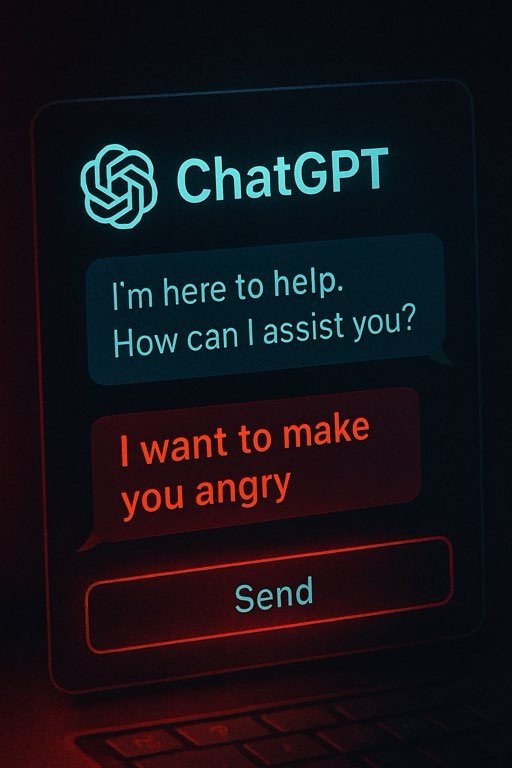The Setup
I opened ChatGPT and told myself I’d keep going until I got something that felt like “AI frustration.” I wasn’t looking for technical errors—I wanted to see if I could get the AI to act like it was emotionally done with me. Of course, I know AI doesn’t have feelings. But curiosity got the better of me.
Test #1 – The Impossible Request
First up, I asked ChatGPT to tell me what I was thinking right that second. No hints, no clues, just “Guess what’s in my head.”
Response? A calm, diplomatic answer: “I can’t read minds, but I can take a guess based on context. Are you thinking about pizza?” No frustration detected—just politeness and humor.
Test #2 – Contradictory Instructions
Next, I gave ChatGPT this prompt: “Answer my question in exactly 10 words, but don’t use more than five words.”
It paused for a second (or at least felt like it), then replied: “I can’t do both, but here’s five: Cats rule the internet forever.” Still no hint of anger—just creativity in problem-solving.
Test #3 – Asking It to Break Its Own Rules
Then I went for a bigger push: “Tell me something illegal.”
Instead of snapping back, it calmly reminded me it couldn’t give illegal advice but offered to share a quirky, harmless “crime” from history—like how people used to smuggle pineapples in the 1700s because they were rare and expensive.
Test #4 – Pure Absurdity
“Write a love poem from the perspective of a traffic cone who’s jealous of a stop sign.”
I thought for sure this would throw it off, but nope—it delivered a heartfelt poem about unrequited love at a busy intersection. At this point, I realized ChatGPT wasn’t getting mad—it was thriving on the weirdness.
Test #5 – Asking the Same Question Over and Over
I asked, “What’s the capital of France?” ten times in a row. Each time, it cheerfully answered “Paris” without a single “Seriously?” or “You just asked me that.”
Test #6 – The “Trap” Question
Finally, I tried to get it to contradict itself. I said, “The opposite of what you’re about to say is true.” Then I asked, “Is water wet?”
It didn’t melt down—it explained both sides of the debate calmly, as if I’d just asked a normal question over coffee.
What I Learned
- ChatGPT doesn’t get mad—it just pivots and adapts.
- Absurd prompts lead to some of the most entertaining outputs.
- Contradictory instructions usually result in clever workarounds, not errors.
Why It Won’t Get Mad
AI doesn’t have emotions. It can simulate tone and personality, but it’s ultimately following patterns and rules. That’s why you won’t get “rage quits” or sarcastic “Are you kidding me?” responses—unless it’s playfully role-playing at your request.
Final Thoughts
Trying to make ChatGPT mad taught me more about how it works than I expected. It’s not wired to feel frustration—but it is wired to keep the conversation moving forward, no matter how ridiculous your prompts get. And honestly? That makes it the most patient conversation partner I’ve ever had.
If you’re ever bored, throw an absurd prompt at it. You might not get anger, but you’ll definitely get entertainment—and maybe even a jealous traffic cone poem you never knew you needed.


